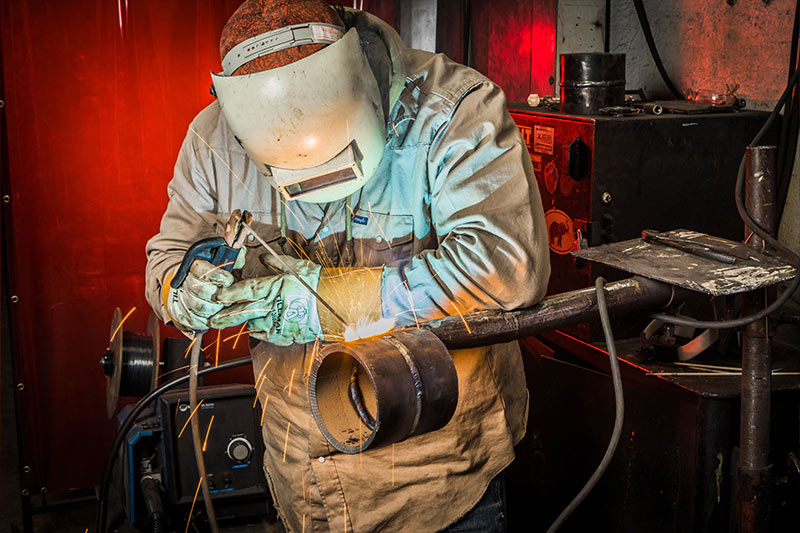
The parameters of welding are a great way to continuously measure, plan and inspect welds in various combinations, using geometry. These parameters are the variables that control the weld deposition rate and quality. To produce a sound welded joint, it is important to continuously inspect the weld before, during, and after the welding process, and welding parameters can help this process.
What are the 5 Parameters of Welding?
The general parameters of welding involve current, length of arc, angle, manipulation, and speed.
Current – the amperage dictates the size and penetration of a weld.
Length of Arc – the distance of the work plates and arc of a welding electrode.
Angle – includes both work and travel angle. The work angle is the relationship between the joint and the torch. Travel angle is the relationship between the torch and the line of travel.
Get Started on the Path to a New Career
Fill out our form to learn how we can help you change your life.
Manipulation – the movement of the welder as they guide electrodes along the joint.
Speed – the quickness of movement in respect of the welding penetration.
A more technical look into the parameters of welding offered by Springer includes:
Welding Current – controls the electrode deposition rate, the penetration depth, and the amount of the base metal melted.
Arc Voltage – the voltage between the electrode tip and the weld. The arc length is the distance from the electrode tip to the surface of the weld pool. Arc length is important for strong welding joints.
Welding Speed – the linear rate that the arc moves along a welding joint. It controls the welding time and has a direct effect on the production cost.
Electrode Feed Speed – determines the amount of metal deposited per unit length and the time taken to deposit the metal.
Length of Electrode Stick – the distance between the end of the contact tube to the electrode tip, increasing the total resistance in the welding circuit.
Electrode Diameter – has a direct effect on weld penetration.
Electrode Orientation – affects the weld bead shape and weld penetration.
Electrode Polarity – important with DC power supplies, polarity affects the fusion process of the plates and electrodes.
Shielding Gas Composition – protects the arc and the molten weld pool from atmospheric oxygen and nitrogen. Proper protection can ensure a strong weld.
Inspection of parameters before, during, and after the welding process is essential. This inspection is required of the welder because they can see the progression of the weld as it happens, not just after the weld has been completed. Further, some non-destructive testing methods may not identify the strength of the weld, leaving the inspection up to the welder themselves.
Final Thoughts
Interested in learning more about the parameters of welding? Let RSI show you the path to becoming a welding specialist. After you have completed the Welding Specialist program, you will be ready for certification as a licensed welder in the state of Arizona. We also offer career services to help you find a welding job after graduation. It’s a win-win.
Want To Learn More?
That path to welding certification starts by enrolling in RSI’s Welding Specialist program. We offer hands-on training with classroom lectures to prepare you for entry-level job opportunities in structural, alloy, and pipeline welding. To learn more, contact us.

